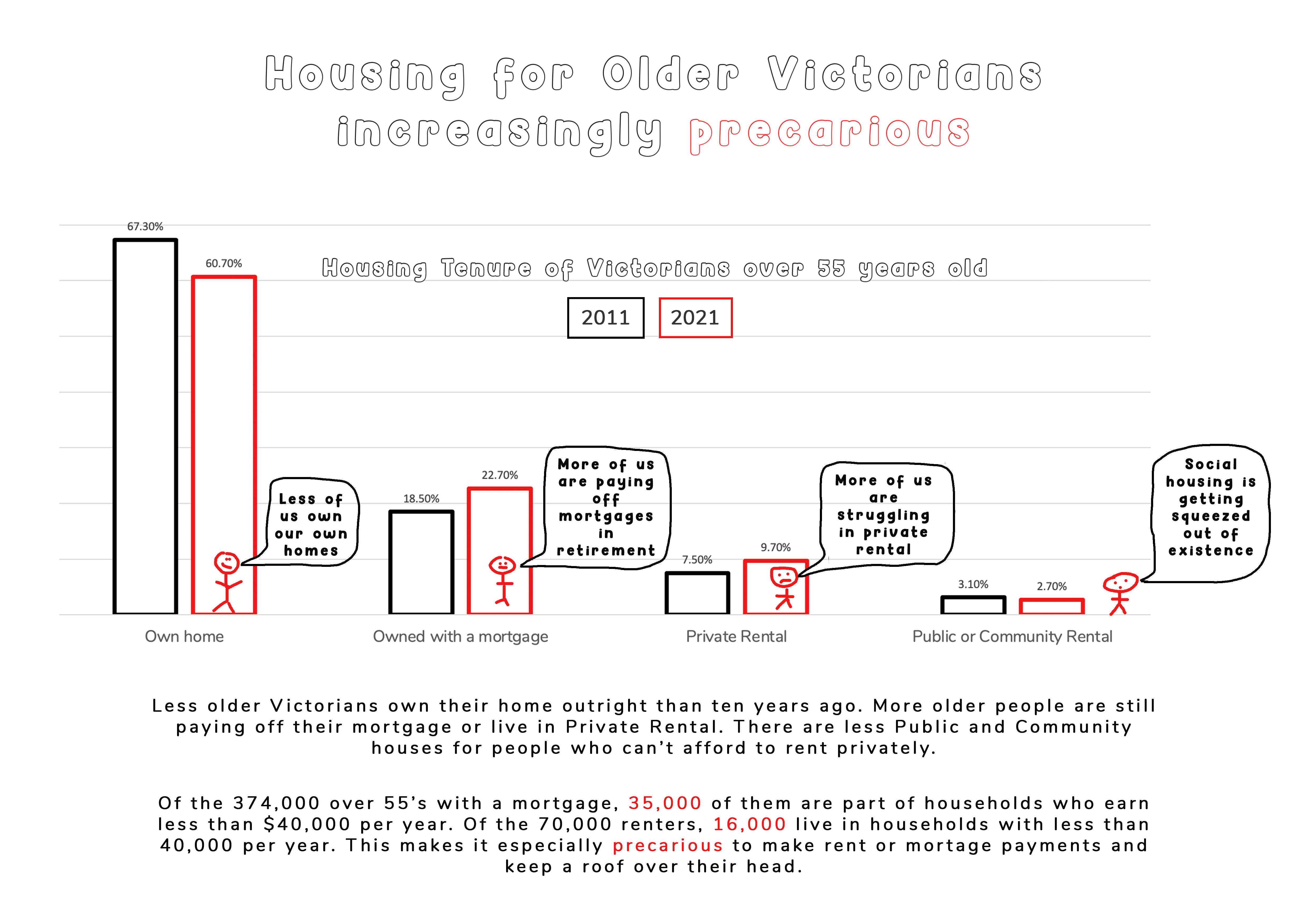More Victorians than ever before are approaching and entering retirement without owning their home, according to analysis of the 2021 Census commissioned by Housing for the Aged Action Group (HAAG) and undertaken by researchers at Swinburne University of Technology, Western Sydney University and Curtin University.
In 2021 there was 160,100 Victorians over 55 renting, up from 90,300 in 2011. In 2021 9.7% of Victorians over 55 were renting, up from 7.5% in 2011. Similarly, the number of Victorians over 55 with a mortgage increased from 223,697 in 2011 to 374,004 in 2021. In 2011 18.5% of over 55s had a mortgage, compared with 22.7% in 2021.
The increases are happening at the same time as the percentage of Victorians over 55 renting in social housing declines. In 2011 3.1% were social renters, compared with 2.7% in 2021.
These changes are particularly concerning, given the analysis also reveals that 27.2% of people over 55 and renting privately and 9.5% of over 55s with a mortgage, were earning less than $40,000 per year (gross household income), HAAG Executive Officer Fiona York says.
“When older people on low incomes are renting or still paying off their mortgage as they age, it puts them at much greater risk of experiencing homelessness,” York says. “It’s a critical issue, given the high rents and low vacancy rates we’re seeing right across Victoria.”
The weekly asking price for a 2-bedroom unit in Melbourne is $467 per week, or $24,284 per year. Of the 188,000 Victorians receiving JobSeeker 54,515, nearly 30%, are over 55.
“That means a good portion of those people over 55 and renting in Melbourne are already in housing stress,” York says. “Victoria should be a place where people can age well, but for that to happen we need to build public and community housing to give older people on low incomes more affordable housing options.” The problem is particularly pronounced in regional Victoria. Almost 40% of people over 55 and renting in regional Victoria were earning less than $40,000.
“The housing crisis has expanded from our cities to the regions, impacting the lives of all older Victorians,” York says. “The next Victorian Government must act. We need at least 60,000 public and community homes to be built by 2030 to address this crisis. A portion must be set aside to protect older Victorians from finding themselves without a home as they grow older.”
HAAG is also calling for:
- Public, community, and affordable housing to be built for older people in places that keep the connected to community, and provide easy access to greenspace, transport, health and other services so they can age well.
- Improve protections for retirement housing residents, to make it a fairer and more affordable housing option.
- Establish a housing ombudsman with specific expertise in retirement and social housing
- Expand the Home at Last program across Victoria so it can provide early intervention and prevention to the state’s growing numbers of older people.
Read our media release and look at the data
Read the Age story here



 "There is nothing like staying at home for real comfort."
"There is nothing like staying at home for real comfort."